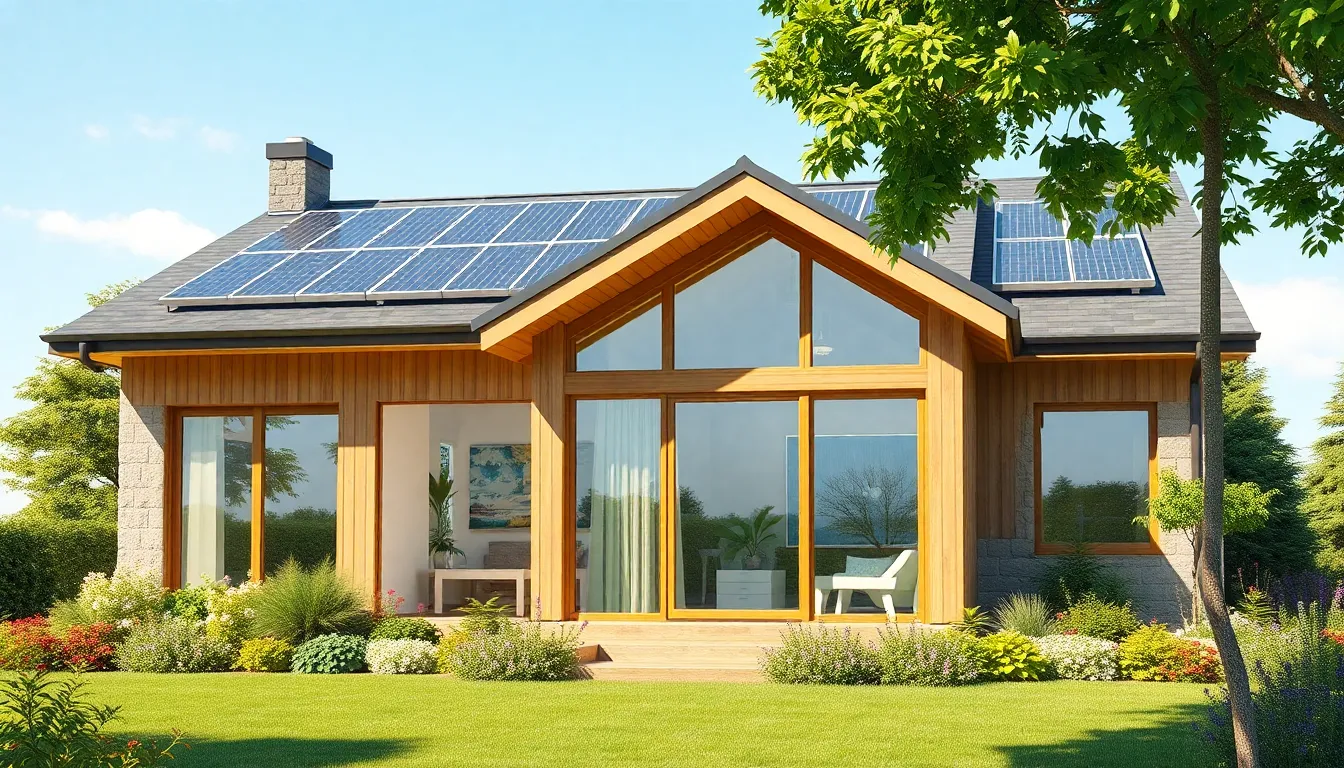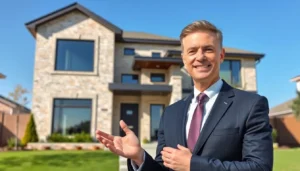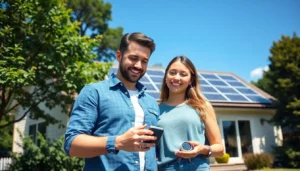Table of Contents
ToggleImagine a home so energy-efficient that even your electric bill does a double take. Super energy-efficient homes aren’t just a trend; they’re a revolution in the way we think about living spaces. With clever designs and innovative technologies, these homes promise to keep both the planet and your wallet happy.
What Are Super Energy Efficient Homes?
Super energy efficient homes represent a modern approach to residential design, focusing on sustainability and reduced energy consumption. These homes harness technology and smart architecture to enhance thermal performance, ultimately lowering utility bills and carbon footprints.
Efficient insulation materials prevent heat loss, while advanced windows maximize natural light. Energy-efficient appliances contribute to lower energy usage, demonstrating practical steps homeowners can take to reduce consumption.
Innovative features such as solar panels provide renewable energy, creating homes that generate power rather than just consuming it. Smart home systems allow for optimized energy management. Homeowners can monitor and adjust energy use in real-time, further promoting efficiency.
Building orientation plays a crucial role in energy efficiency. Properly positioned homes maximize sunlight exposure during winter and minimize heat absorption in summer. This thoughtful design reduces reliance on heating and cooling systems, enhancing comfort and lowering costs.
Water conservation measures also find a place in super energy efficient homes. Rainwater harvesting systems collect runoff for irrigation, minimizing the need for municipal water. Efficient plumbing fixtures reduce water waste, highlighting a commitment to sustainability.
Investment in super energy efficient homes leads to long-term savings and environmental benefits. Homeowners experience reduced energy bills, contributing to overall financial wellness. As these homes gain popularity, their impact on the environment becomes increasingly significant.
Key Features of Super Energy Efficient Homes

Super energy-efficient homes incorporate various features that promote sustainability and financial savings. These elements enhance overall performance and comfort within living spaces.
Insulation and Sealing
Effective insulation material plays a crucial role in minimizing heat transfer. Foam, fiberglass, and cellulose are commonly used materials that improve thermal performance. Sealing gaps in the building envelope prevents air leaks and drafts. Properly insulated attics and walls maintain consistent indoor temperatures. In turn, reduced energy consumption leads to lower utility bills. Homeowners can expect a more comfortable living experience year-round.
Energy-Efficient Windows
High-performance windows significantly impact a home’s energy efficiency. Double or triple-glazed windows enhance insulation and reduce heat loss. Specialized coatings reflect ultraviolet rays, helping to maintain comfortable indoor temperatures. Window frames made from materials such as vinyl or wood offer better thermal resistance. Positioning windows for natural light boosts daylight exposure while minimizing solar heat gain. Ultimately, energy-efficient windows contribute to substantial savings on heating and cooling costs.
Renewable Energy Sources
Integrating renewable energy sources demonstrates a commitment to sustainability. Solar panels generate clean energy, reducing reliance on fossil fuels. Wind turbines, where applicable, can further offset energy demands. Homeowners often invest in energy storage systems to utilize generated power efficiently. This practice enhances resilience during power outages. By harnessing renewable energy, households lower their carbon footprints and enjoy long-term savings. Super energy-efficient homes thrive on innovative technologies that support a greener future.
Benefits of Super Energy Efficient Homes
Super energy-efficient homes provide numerous advantages for homeowners and the environment. Their innovative designs and technologies contribute to various cost-saving and ecological benefits.
Cost Savings
Cost savings manifest primarily through reduced utility bills. Efficient insulation prevents heat loss, which leads to lower heating and cooling expenses. Incorporating energy-efficient appliances allows for additional reductions in electricity usage. Homeowners often experience significant savings when utilizing renewable energy sources, such as solar panels. Many homeowners recoup initial investments in these technologies through long-term energy savings. Additionally, lower maintenance costs further enhance financial benefits. Overall, investing in a super energy-efficient home proves financially savvy over time.
Environmental Impact
Environmental impact remains a crucial benefit of super energy-efficient homes. These homes significantly reduce carbon emissions, supporting global sustainability efforts. Utilizing renewable energy sources directly contributes to lowering fossil fuel reliance. Efficient designs also minimize energy consumption, reducing the overall demand for electricity. Water conservation measures, like efficient plumbing, promote responsible resource usage, leading to less strain on local ecosystems. Ultimately, super energy-efficient homes embody a commitment to environmental well-being, illustrating the importance of sustainable living.
How to Build or Retrofit a Super Energy Efficient Home
Building or retrofitting a super energy-efficient home involves strategic choices and innovative technologies. Focus on selecting high-performance materials and integrating smart technology for maximum efficiency.
Choosing the Right Materials
Selecting the right materials significantly impacts energy efficiency. Insulation with high R-values minimizes heat transfer, maintaining comfortable indoor temperatures. Windows with low U-values reduce heat loss and improve overall insulation. Utilizing renewable resources for construction, like bamboo or reclaimed wood, promotes environmental sustainability. Energy-efficient appliances reduce electricity consumption while providing the same performance as traditional options. Incorporating reflective roofing materials can further lower heat absorption, keeping homes cooler in the summer months. Careful consideration of each material creates a foundation for energy savings and long-term sustainability.
Implementing Smart Technology
Integrating smart technology enhances energy management in a super energy-efficient home. Smart thermostats optimize temperature settings based on occupancy and preferences, reducing energy waste. Home automation systems control lighting, heating, and cooling, adjusting usage according to real-time needs. Solar energy systems equipped with battery storage allow homeowners to maximize renewable energy use throughout the day and night. Smart meters provide detailed energy consumption insights, helping residents identify areas for improvement. Additionally, automated shade systems regulate natural light and temperature, enhancing comfort while minimizing energy costs. Utilizing these technologies creates a seamless connection between homeowners and their energy use, promoting efficiency.
Embracing super energy-efficient homes represents a pivotal shift toward sustainable living. These innovative structures not only lower utility bills but also contribute significantly to environmental preservation. By integrating advanced technologies and smart designs homeowners can enjoy enhanced comfort while minimizing their carbon footprints.
Investing in these homes is more than just a financial decision; it’s a commitment to a sustainable future. As awareness grows and technology advances the trend toward super energy-efficient living will likely continue to gain momentum. Ultimately, choosing to build or retrofit a home with energy efficiency in mind is a proactive step towards a more sustainable and economically sound lifestyle.




